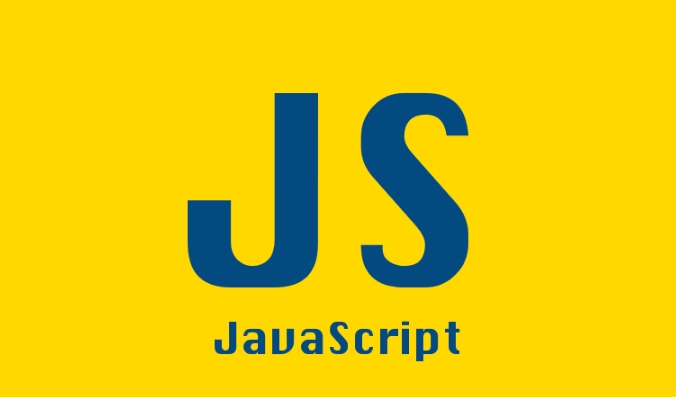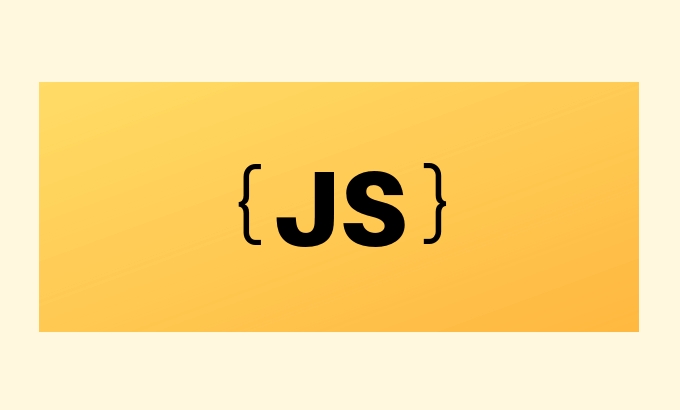How to Use Regular Expressions (RegEx) in JavaScript
Jul 13, 2025 am 01:57 AMRegular expressions are used in JavaScript to process strings, providing two ways to create: literals such as /abc/ and constructor new RegExp('abc'); common methods include test() to check matches, match() to get result arrays, replace() to replace content; common modifiers include i (ignoring case), g (global search), metacharacters such as \d to match numbers, and . to match any character; application techniques include using online tools to test, escape special characters, and grouping data with brackets. Mastering basic syntax and methods can meet the needs of multi-digit string processing.

Regular expressions (RegEx) are powerful tools for handling strings, especially in JavaScript. If you need to do form verification, text extraction or replacement operations, mastering basic RegEx usage will save a lot of time.

Create regular expressions
JavaScript provides two ways to create regular expressions: literals and constructors.
-
Using slashes
/is the most common way:
const regex = /abc/;
Use
RegExpconstructor more flexible and suitable for dynamically generated regularity:const pattern = 'abc'; const regex = new RegExp(pattern);
The two functions are the same, the difference is that the constructor allows you to pass in variables, which is more suitable for runtime splicing rules.

Common matching operations
The real role of RegEx is in matching and processing strings. Several commonly used methods include:
test(): Check whether it matches and returns a boolean value.const regex = /hello/; regex.test('hello world'); // true
match(): used for strings, return a matching result array or null.'hello world'.match(/hello/); // ["hello", index: 0, input: "hello world", groups: undefined]
replace(): replaces the matching content.'hello world'.replace(/world/, 'there'); // "hello there"
These methods are the most used every day, and it is recommended to be familiar with their basic behavior, especially the return value format, to avoid errors.
Common modifiers and metacharacters
There are some common symbols in regular expressions that can enhance matching capabilities:
i : Ignore case
/hello/ican match "HELLO" or "hello"g : Global search
/a/gwill find all "a", instead of stopping the first one\d matches numbers, \w matches letters, numbers or underscores, . matches any character (except for line breaks)
For example: If you want to extract all email addresses in a paragraph of text, you can write a regular like this:
const text = 'Contact us at support@example.com or sales@company.org.';
const emails = text.match(/[a-zA-Z0-9._% -] @[a-zA-Z0-9.-] \.[az]{2,}/g);
// ["support@example.com", "sales@company.org"]Although this rule looks a bit long, it has a clear structure and each part has a clear purpose.
Tips for practical application
- Test regular expressions : You can use online tools like regex101.com to try while writing to reduce debugging time.
- Escape special characters : If you want to match symbols like
.or?, these symbols that have meaning in themselves need to be escaped with a\, such as/\.com/to correctly match.com. - Grouping and Capture : Use brackets
()to extract the matching content of a certain part of it separately, which is often used to parse data.
For example, extract the domain name from the URL:
const url = 'https://example.com/path/to/page'; const match = url.match(/https?:\/\/([^\/] )/); // match[1] is "example.com"
Basically that's it. Regularity cannot be mastered in one or two days, but as long as you master the basic grammar and common methods, you can handle most of the situations.
The above is the detailed content of How to Use Regular Expressions (RegEx) in JavaScript. For more information, please follow other related articles on the PHP Chinese website!

Hot AI Tools

Undress AI Tool
Undress images for free

Undresser.AI Undress
AI-powered app for creating realistic nude photos

AI Clothes Remover
Online AI tool for removing clothes from photos.

Clothoff.io
AI clothes remover

Video Face Swap
Swap faces in any video effortlessly with our completely free AI face swap tool!

Hot Article

Hot Tools

Notepad++7.3.1
Easy-to-use and free code editor

SublimeText3 Chinese version
Chinese version, very easy to use

Zend Studio 13.0.1
Powerful PHP integrated development environment

Dreamweaver CS6
Visual web development tools

SublimeText3 Mac version
God-level code editing software (SublimeText3)
 PHP regular expression validation: number format detection
Mar 21, 2024 am 09:45 AM
PHP regular expression validation: number format detection
Mar 21, 2024 am 09:45 AM
PHP regular expression verification: Number format detection When writing PHP programs, it is often necessary to verify the data entered by the user. One of the common verifications is to check whether the data conforms to the specified number format. In PHP, you can use regular expressions to achieve this kind of validation. This article will introduce how to use PHP regular expressions to verify number formats and provide specific code examples. First, let’s look at common number format validation requirements: Integers: only contain numbers 0-9, can start with a plus or minus sign, and do not contain decimal points. floating point
 How to match timestamps using regular expressions in Go?
Jun 02, 2024 am 09:00 AM
How to match timestamps using regular expressions in Go?
Jun 02, 2024 am 09:00 AM
In Go, you can use regular expressions to match timestamps: compile a regular expression string, such as the one used to match ISO8601 timestamps: ^\d{4}-\d{2}-\d{2}T \d{2}:\d{2}:\d{2}(\.\d+)?(Z|[+-][0-9]{2}:[0-9]{2})$ . Use the regexp.MatchString function to check if a string matches a regular expression.
 Master regular expressions and string processing in Go language
Nov 30, 2023 am 09:54 AM
Master regular expressions and string processing in Go language
Nov 30, 2023 am 09:54 AM
As a modern programming language, Go language provides powerful regular expressions and string processing functions, allowing developers to process string data more efficiently. It is very important for developers to master regular expressions and string processing in Go language. This article will introduce in detail the basic concepts and usage of regular expressions in Go language, and how to use Go language to process strings. 1. Regular expressions Regular expressions are a tool used to describe string patterns. They can easily implement operations such as string matching, search, and replacement.
 How to validate email address in Golang using regular expression?
May 31, 2024 pm 01:04 PM
How to validate email address in Golang using regular expression?
May 31, 2024 pm 01:04 PM
To validate email addresses in Golang using regular expressions, follow these steps: Use regexp.MustCompile to create a regular expression pattern that matches valid email address formats. Use the MatchString function to check whether a string matches a pattern. This pattern covers most valid email address formats, including: Local usernames can contain letters, numbers, and special characters: !.#$%&'*+/=?^_{|}~-`Domain names must contain at least One letter, followed by letters, numbers, or hyphens. The top-level domain (TLD) cannot be longer than 63 characters.
 How to verify password using regular expression in Go?
Jun 02, 2024 pm 07:31 PM
How to verify password using regular expression in Go?
Jun 02, 2024 pm 07:31 PM
The method of using regular expressions to verify passwords in Go is as follows: Define a regular expression pattern that meets the minimum password requirements: at least 8 characters, including lowercase letters, uppercase letters, numbers, and special characters. Compile regular expression patterns using the MustCompile function from the regexp package. Use the MatchString method to test whether the input string matches a regular expression pattern.
 Chinese character filtering: PHP regular expression practice
Mar 24, 2024 pm 04:48 PM
Chinese character filtering: PHP regular expression practice
Mar 24, 2024 pm 04:48 PM
PHP is a widely used programming language, especially popular in the field of web development. In the process of web development, we often encounter the need to filter and verify text input by users, among which character filtering is a very important operation. This article will introduce how to use regular expressions in PHP to implement Chinese character filtering, and give specific code examples. First of all, we need to clarify that the Unicode range of Chinese characters is from u4e00 to u9fa5, that is, all Chinese characters are in this range.
 Golang regular expression usage guide
Apr 08, 2024 pm 02:15 PM
Golang regular expression usage guide
Apr 08, 2024 pm 02:15 PM
Regular expressions in Go provide a powerful string processing tool: use the regexp package for regular expression operations. Use regular expression syntax to match and manipulate strings. Matches character classes, repeating characters, groupings, anchors, and boundaries. Match strings with MatchString, extract matches with FindStringSubmatch, and replace strings with ReplaceAllString. Application scenarios include verifying email addresses, extracting HTML links, etc.
 PHP regular expressions: exact matching and exclusion of fuzzy inclusions
Feb 28, 2024 pm 01:03 PM
PHP regular expressions: exact matching and exclusion of fuzzy inclusions
Feb 28, 2024 pm 01:03 PM
PHP Regular Expressions: Exact Matching and Exclusion Fuzzy inclusion regular expressions are a powerful text matching tool that can help programmers perform efficient search, replacement and filtering when processing text. In PHP, regular expressions are also widely used in string processing and data matching. This article will focus on how to perform exact matching and exclude fuzzy inclusion operations in PHP, and will illustrate it with specific code examples. Exact match Exact match means matching only strings that meet the exact condition, not any variations or extra words.







